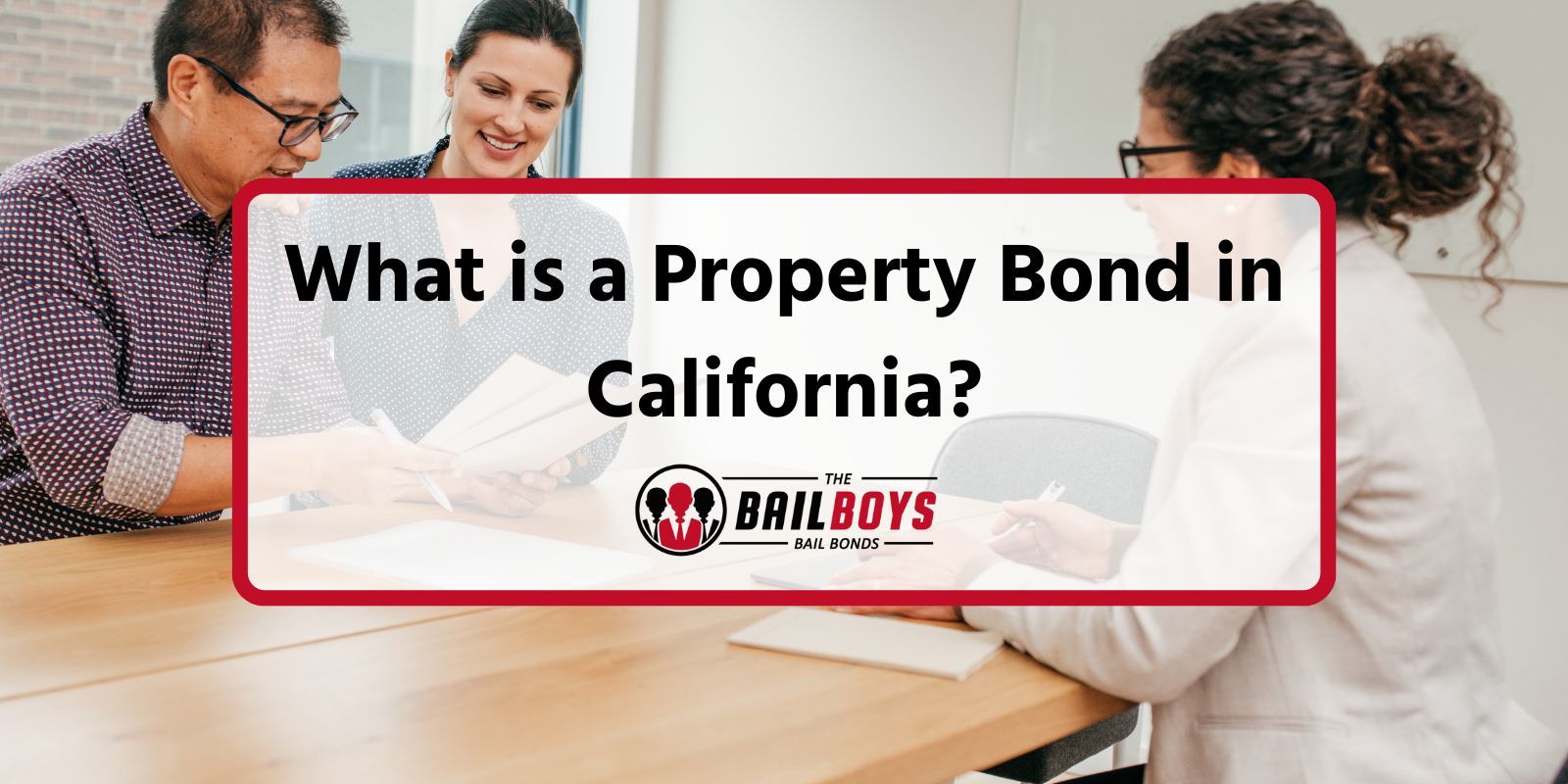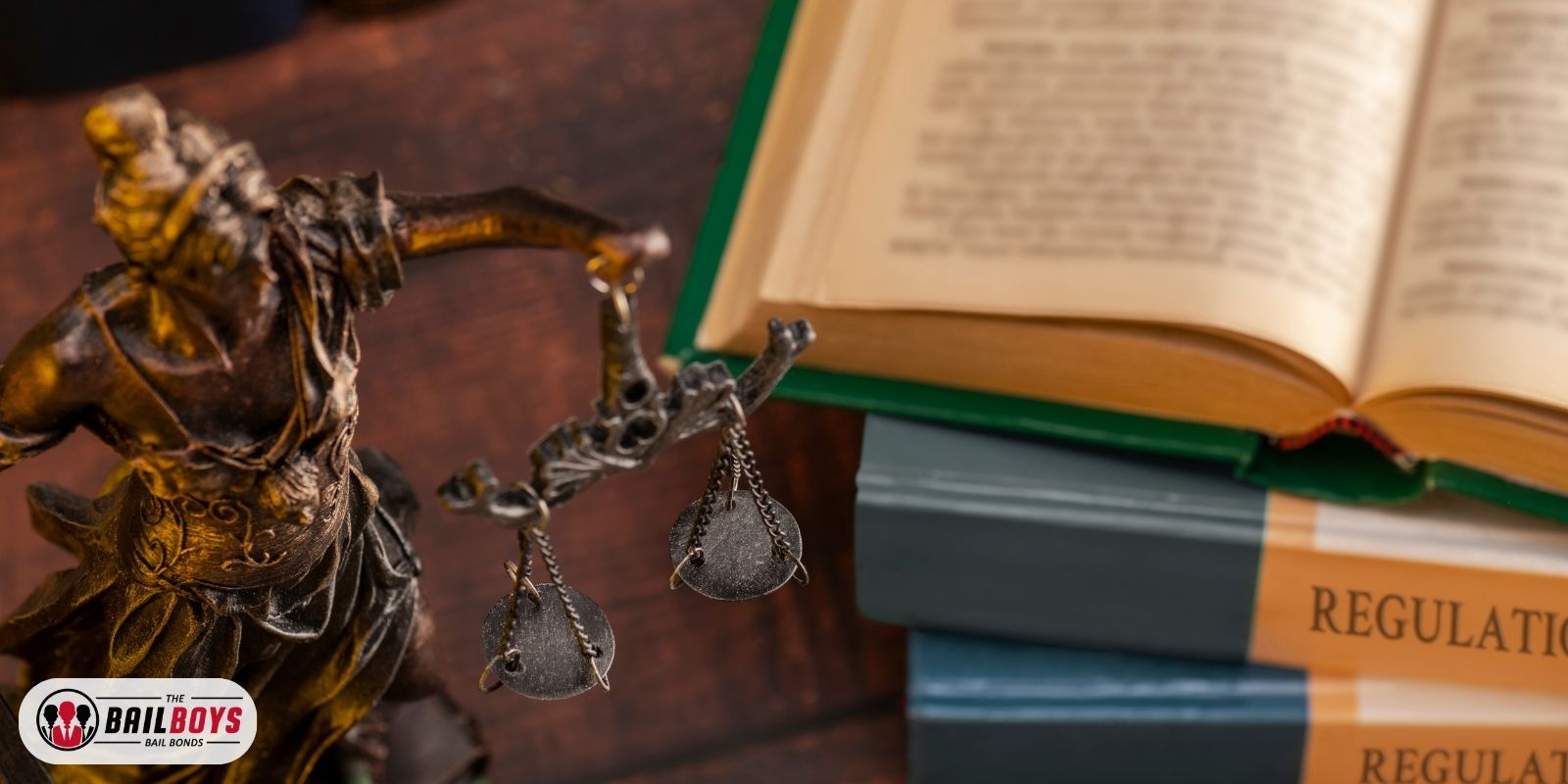
What is a Property Bond in CA?
Securing bail is a hectic process, particularly if the defendant is not in a position to pay the full cash bail amount. This is where other alternatives come in, like surety bonds and property bonds.
In California, property bail bonds are one of the ways individuals secure their temporary release while awaiting trial. However, property bail bonds can be intricate and may require guidance and a thorough understanding of how bonds work.
This article explores property bonds in California, the steps involved in obtaining release through property bonds, and their significance in the California Judicial System.
Understanding Bonds

A bond is a financial agreement that helps defendants secure their release while awaiting trial. Bail agents like The Bail Boys help defendants pay the bail bond amount. Bonds come in handy when a defendant cannot pay the full bail amount in cash. There are different types of bonds, including cash bonds, property bonds, and surety bonds.
Cash Bonds:
When a defendant pays the bail amount set by the court in cash, it is called a cash bond. This allows them to be temporarily released while awaiting trial.
Surety Bonds:
On the other hand, surety bonds are used when the defendant cannot afford the bail amount set and seeks out the services of a bail bond company. The bail bond company enters into a financial agreement with the court to pay the full bail amount should the defendant forfeit court. The bail bonds company provides these services at a non-refundable fee, usually a percentage of the bail amount.
Property Bonds:
Property bonds refer to when a defendant uses their property or assets as collateral to ensure their appearance in all court proceedings. More on that below.
What Are Property Bonds?

Property bonds
Are a type of bail bond where a defendant leverages the value of real estate as collateral to guarantee their appearance in court. For a property bond to occur, the defendant must provide evidence of ownership of the collateral and the property must have enough equity to cover the full bail amount. The property used as collateral must be worth at least twice the bail amount to be considered viable for a property bond.
In California, property bonds are governed by state laws, regulations, and court rules that outline the requirements and procedures of using real estate to secure bail. Some of these key laws and regulations include
California Penal Code sections 1276, 1276.5, and 1298: The California Penal Code outlines the eligibility criteria and processes related to property bonds.
California Code of Civil Procedure section 995.010 to 995.410: These sections outline the documentation needed to acquire a property bond and the legal mechanisms behind it.
California Rules of Court Rule 4.127: This rule provides guidance on how the state court system should process and issue an acceptance of property bonds.
Regulatory Agencies: Agencies such as the California Department of Issuance may regulate some aspects of property bond practices especially if a licensed bail bond company is involved.
Local Court Rules: Individual courts may establish their own local rules and procedures when dealing with property bonds.
Other key laws include bail reform legislation that has prompted California to reevaluate its bail practices and previous case laws that offer precedent on how to deal with property and a bail bondsman. The goal of all these laws and regulations is to provide alternatives to cash bail since cash bail in California can be quite high.
To be successful, a property bond in California must meet certain conditions and requirements under the California Penal Code. These conditions and requirements ensure the validity of the property bond process as what is a property bond in ca the form of securing bail for the defendant.
Some of the specific conditions and requirements in California include:

Property Location
The property being issued as collateral must be within the jurisdiction where the trial is happening.
Ownership Verification:
The defendant or their representative must prove legal ownership of the property.
Zero Outstanding debt:
The property should not have any outstanding mortgages or liens attached to its ownership.
Sufficient Equity:
The property used as collateral should be at least twice the bail amount for it to be considered viable for the property bond.
Co-owner’s consent:
If the property is owned by multiple people, all coowners should provide their consent to use the property as collateral.
Property Valuation by the court:
The court must conduct its own valuation to determine the value of the property and if it qualifies to be collateral for the bond.
Bond Agreement:
The property owner is required to sign a written bond agreement with the court. The agreement outlines the terms and conditions of the property bond.
The Process of Securing a Property Bond in California

Using a property bond as a form of bail in California to acquire a temporary release while awaiting trial can be time-consuming. However, there are several important steps a defendant and his legal team have to take in order to use property bonds to secure their release.
Once the court or bail bond agency orders a release through property bonds, there are a few steps that a defendant and their legal representative must take before the defendant is released on bail.
Here is a detailed step-by-step guide of the process:
Eligibility Assessment:
The legal representative of the defendant must determine if the property at hand meets the eligibility criteria for property bonds. This includes determining proof of ownership and the equity of the property. The defendant can also call the court clerk to determine the type of properties eligible for property bonds.
Property Evaluation:
In this step, the court conducts its own evaluation to prove the eligibility of the property presented to them as a property bond. The court must ensure the property has sufficient equity to cover the bail amount, and the property is located within the jurisdiction where the case is being tried.
Property Bond Application:
The defendant and their attorney gather all the required documentation to support their property bond applications. Some of these documents include the original deed of the property or a certified copy of the deed, the property’s appraisal, and the balance of all loans such as mortgage statements.
Court Approval:
The court reviews all the documents submitted together with the property bond application and determines if the property is eligible for a property bond. If the property is eligible the court accepts the property as collateral for bail.
Bond Agreement:
Once the court approves the property to be collateral, the property owner or owners sign a bond agreement that outlines the terms and conditions of the property bond.
Property Lien:
After the bond agreement is signed, the court proceeds to place a lien on the property to have a legal claim on the property to ensure that the property remains as collateral until the completion of the trial and the defendant has adhered to all the court’s regulations and all the court fines if any have been settled.
Release on Bail:
Once the lien is in place, the court proceeds to order a release of the defendant from custody on bail as they await their trial.
Compliance with Court Proceedings and Regulations:
The defendant is required to show up for all court proceedings, adhere to all the conditions set in the bond agreement and pay up for all court fines accumulated during this period.
Property Bond Resolution:
Once the court proceedings are concluded and the defendant adhered to showing up for all court proceedings and following the conditions set in the bond agreement, the lien is lifted and the property ownership rights are fully restored.
For a defendant to have a seamless property bond process it is advisable to engage with a licensed bail bond company. The bail bond company can act as a middleman between the real estate agent, the defendant and the court. The bail bond company can provide expert guidance to the defendant, and assist in gathering the necessary documents and property evaluation. They can also help mitigate any potential risks that may arise during the process.
The Financial Implications of Property Bonds

Property bonds can have positive and negative financial consequences. One major benefit is that they can serve as an alternative to cash bail. If a defendant cannot afford to pay the full bail amount in cash, they can still use property bonds to secure their release.
Using personal property used as collateral to obtain bail is a preferable option compared to selling assets in order to secure the necessary funds for release. When a property bond is used, the owner of the property regains full ownership rights as long as the defendant follows the conditions stated in the bond agreement.
Defendants can avoid ongoing costs related to incarceration, including jail fees, and potential loss of income, by securing their release through a property bond.
There are potential financial downsides to investing in property bonds, including the risk of foreclosure. If the person who posted the bond fails to show up for court or violates the bond agreement, the court may order the property used as collateral to be foreclosed.
When going through the property bond process, there are various legal fees and costs involved. These may include expenses like appraisal costs, filing fees, and other related expenses that may impact the defendant or the property owner negatively.
Aside from the risk of foreclosure, property owners may face other penalties if the defendant fails to attend court proceedings or violates the terms of the bail agreement.
The Impact of Property Bonds on the Criminal Justice System.
Property bonds have had a significant impact on the California criminal justice system not only on individual cases but in the overall system.
A significant benefit of property bonds is the reduction of overcrowding in jails. Cash bails in California require substantial amounts of money that many individuals cannot afford. Property bonds provide an alternative solution for those unable to pay cash bail. By utilizing property bonds, more people can be released on bail, lowering the number of individuals who are incarcerated due to their inability to post bail.
By posting bail or using property bonds, individuals have the opportunity to secure a pretrial release. This helps to enhance a degree of fairness in the criminal justice system, as bail amounts can often prevent many people from being released while they await trial.
Using property bonds as a form of bail may lead to unequal access to pretrial release. This is because not all individuals have the same level of property ownership and equity. This fact raises concerns in the California criminal justice system regarding potential disparities in accessing this type of bail.
How to Lift A property Bond Lien in California
Upon the completion of the trial, if the defendant adhered to the conditions of the bond agreement and showed up for all court proceedings, the ownership rights of the property should go back to the property owner. Lifting a property bond lien in California requires a detailed step-by-step approach. Here is a breakdown.
Obtain Proof of Case Resolution:
Get official documentation from the court. This will serve as proof of the outcome.
Contact the Court Clerk:
Reach out to the office of the court clerk where the case was heard and inquire about the procedure for lifting a property bond lien.
Submit Documentation:
Ensure that all necessary documentation, including the proof of resolution documentation, bond agreement, lien agreement or any other required documentation is submitted for review.
Court Order:
Once the court reviews the documentation submitted and verifies that the case has been resolved, the court issues an order to lift the lien. This order acts as an official release of the property on lien.
Record the Lien Removal:
In the scenario where the property bond lien was recorded with the county’s land records, it is important to submit the court order and any other necessary documentation to remove the lien from the property’s records to avoid any future negative financial implications.
Final Thoughts
Property bonds are a vital alternative to cash bail within the California Criminal Justice System. By allowing individuals to leverage their property as collateral, it helps them to secure a temporary release while awaiting trial. It also helps address issues like jail overcrowding and offers a degree of fairness to pretrial release.
The significance of property bonds, however, extends beyond individual cases. While they enhance access to justice, there are concerns about potential access discrepancies based on property ownership and equity. Property bonds are used to establish a balance between individual rights and community safety, contributing to a more nuanced and comprehensive approach to pretrial release.
It is important to understand the property bond process, Defendants need to be well-informed of the potential risks and benefits of property bonds before putting up property as collateral. Seek legal counsel and professionals like bail bond companies to help you navigate the property bail bond process. They will help you make informed decisions and have a seamless process when it comes to property bail bonds.


